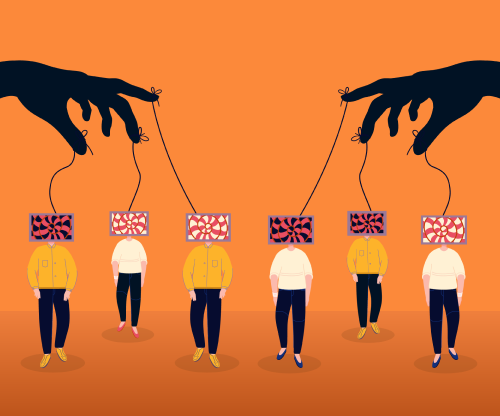On May 15, 2024, a shocking event unfolded with the attempted assassination of Robert Fico, the Prime Minister of Slovakia.
This incident occurred just before a prolonged global election season, beginning with the Indian elections, followed by South African elections, EU elections, and culminating in the US Presidential elections. Billions of people will either vote or abstain, influencing the developmental trajectories of their respective countries.
At Sensika, our mission has always been to uncover the truth through available data. Our team delved deeply into the vast amounts of social and online data to understand the developments, narratives, driving forces, opinions, and speculations surrounding this event.
Here are some key takeaways, which will be further supported by data and explained through our analysis:
- Troll Activity Initiation: Troll activity began within an hour after the shooting.
- Organized Efforts: The troll activity was well-organized, promoting a set of early narratives.
- Shift in Tactics: Troll factories have moved away from using automated bots.
- Pattern of Activity: Troll activity ceased during the weekend, strongly implying that troll account operators are regular working individuals.
- Surviving Narratives: Of the numerous narratives spread immediately after the event, only one – the prophecy of WW3 doom – persisted beyond the weekend.
- Targeted Exploitation: The topic was heavily exploited in English, targeting US users, despite its predominantly European context.
- Influence of Public Figures: Marjorie Taylor Greene repeated the two main WHY narratives that the trolls were amplifying.
These points provide a foundation for understanding the organized and strategic efforts of troll activities surrounding this high-profile incident.
Table of contents
Quantification of the Event
Our analysis began with establishing the quantitative social communication and engagement metrics. These metrics reveal the extent and intensity of public interaction on X around the event.
Reach and Engagement Metrics
Analyzing the reach and engagement metrics offers deeper insights into how the assassination attempt on Robert Fico resonated across X. These metrics reveal the breadth of the discussion, the intensity and nature of public interaction.
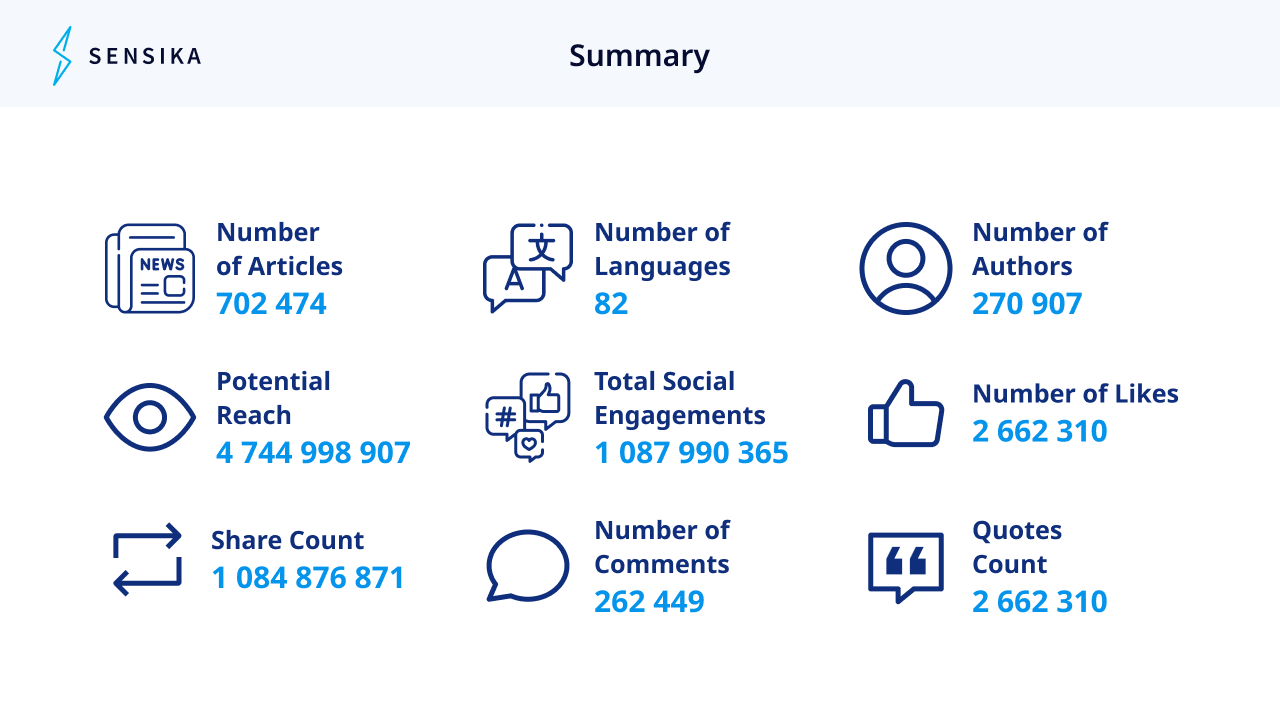
High Participation:
- Number of Tweets and Authors: The event generated 702,138 tweets from over 270,000 unique authors, indicating widespread participation.
- Language Diversity: Tweets were posted in 82 languages, showing global interest and international impact.
Engagement Patterns:
- Potential Reach: Nearly 4.7 billion, highlighting social media’s amplification effect.
- Social Engagements: Over 1 billion engagements, reflecting substantial public interest.
Engagement Ratios:
- Posts to Potential Reach: The ratio of tweets to potential reach (1:6700) indicates that each tweet had the potential to reach thousands of users, showcasing the powerful dissemination capability of X.
- Posts to Engagements: Each tweet generated significant interactions, with an average ratio of 1:1550. This high engagement rate suggests that users were not only consuming content but actively interacting with it.
Types of Engagement:
- Shares vs. Comments and Likes: Over 1 billion shares vs. 2.6 million likes and 261,744 comments, showing a strong tendency towards sharing.
- Bookmarks and Quotes: 126,354 bookmarks and 60,350 quotes indicate valuable content and active engagement.
Implications of Engagement Patterns:
- Rapid Dissemination: High share count and potential reach emphasize the need for timely monitoring and response.
- Depth of Interaction: Significant comments and likes show deep engagement, indicating a highly emotive and polarizing topic.
In summary, the reach and engagement metrics underscore the extensive and rapid dissemination of information about Robert Fico’s assassination attempt on X. The global participation, high engagement levels, and strong inclination towards sharing highlight the critical role of social media in shaping public discourse and the importance of vigilant monitoring to combat misinformation.
US audience was the clear target
Our analysis revealed that a significant portion of the communication surrounding the assassination attempt on Robert Fico was strategically targeted towards the US audience. This observation is particularly notable given the European context of the event.

Language Distribution
- English Dominance: 50% of the tweets were in English, indicating a clear focus on reaching and influencing English-speaking audiences, primarily in the United States.
- Spanish Presence: Another 14% of the tweets were in Spanish, further emphasizing the strategic targeting of US users, as Spanish is the second most spoken language in the United States.
- Global Reach: Despite being a European incident, the broad language distribution (tweets posted in 82 different languages) underscores the international interest and the deliberate efforts to globalize the narrative.
Implications:
- Strategic Targeting: The heavy use of English and Spanish suggests a deliberate effort to influence public opinion in the US, leveraging the global reach and engagement potential of social media.
- Influence Operations: This targeting could indicate organized efforts to shape perceptions and discussions in the US, possibly aiming to exploit existing political and social tensions.
The significant use of English and Spanish in the communication surrounding Robert Fico’s assassination attempt highlights the strategic targeting of US audiences. This deliberate focus points to organized influence operations seeking to amplify the event’s impact far beyond Europe, aiming to engage and sway public opinion in the United States.
Troll-driven Activity
Our analysis identified significant troll-driven activity surrounding the assassination attempt on Robert Fico. This activity was characterized by organized and coordinated efforts to propagate specific narratives.
The graph below shows the total volume of tweets, retweets, and comments related to the event, highlighting the peaks and troughs of activity over the period analyzed.
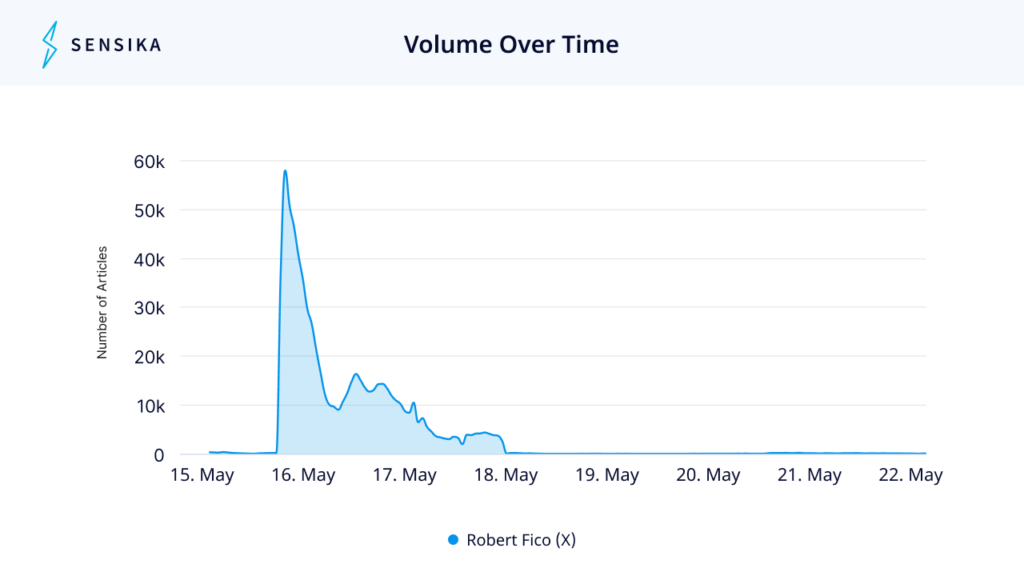
Organized Efforts:
- Early Initiation: Troll activity commenced within an hour after the shooting, indicating a premeditated and rapid response to the event.
- Promotion of Narratives: The troll activity was well-organized, promoting a set of early narratives that quickly gained traction. These narratives were consistently amplified through retweets, comments, and shares, suggesting coordinated efforts to dominate the conversation.
Shift in Tactics:
- Reduction in Automated Bots: Our analysis indicates that troll factories have moved away from using automated bots. Instead, there is a noticeable reliance on human-operated accounts, which are harder to detect and remove.
- Weekend Pause: Troll activity stopped during the weekend, strongly implying that the troll account operators are regular working individuals who do not engage in these activities outside of their working hours.
Narrative Spread:
- WHY Narratives: Offering speculative opinions about why the assassination attempt happened, these narratives quickly gained traction.
- WHO Narratives: Speculative opinions about who was responsible for the assassination attempt were also spread, although these narratives had significantly lower engagement compared to the WHY narratives.
Implications:
- Organized Propagation: The systematic and coordinated nature of the troll activity underscores the sophistication of modern disinformation campaigns.
- Impact on Public Discourse: The rapid and widespread dissemination of these narratives highlights the influence of troll-driven activity in shaping public opinion and discourse.
Our analysis reveals that the majority of the communication surrounding the assassination attempt on Robert Fico was initiated and carried out by troll accounts acting in an organized and controlled manner. The shift from automated bots to human-operated accounts and the pattern of activity cessation during weekends indicate a strategic adaptation in troll tactics.
Deep Dive into the WHY Narratives
The assassination attempt on Robert Fico sparked widespread speculation about the motives behind the attack. Our analysis identified several prominent narratives that attempted to explain why Fico was targeted. These narratives were heavily propagated by troll accounts and gained significant traction within the first 48 hours post-incident.
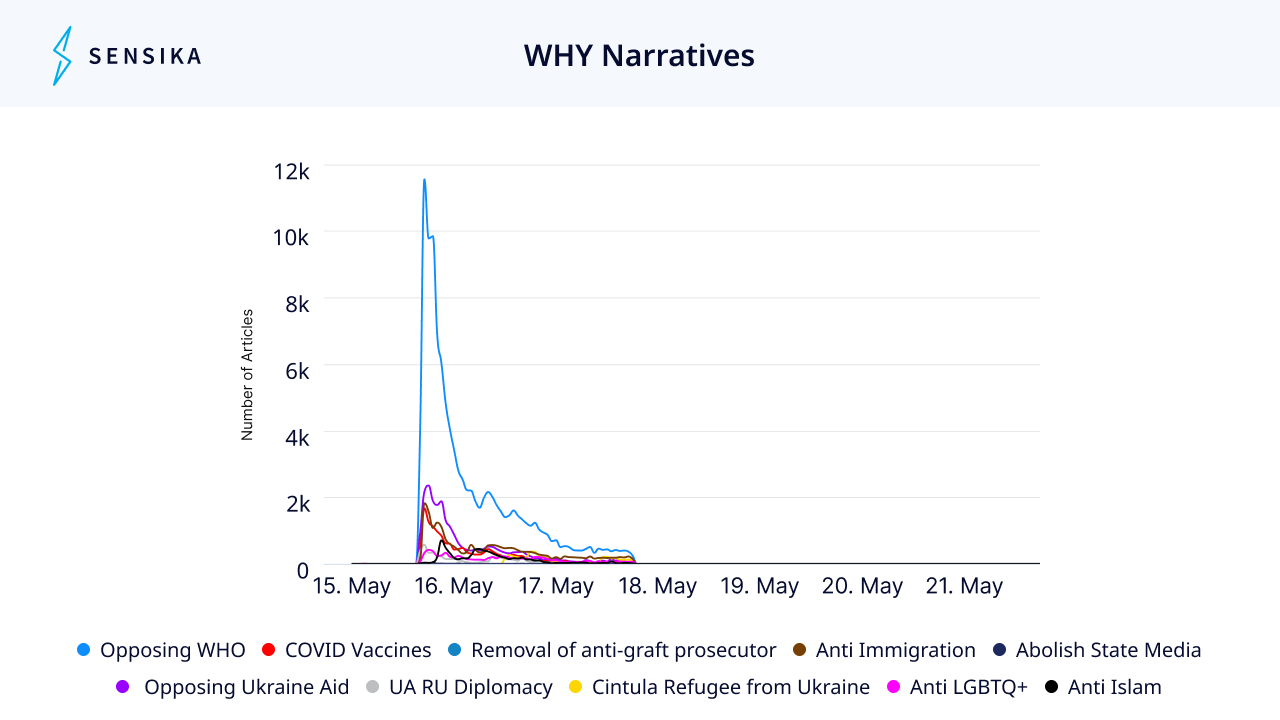
The two main WHY narratives—opposition to WHO policies and disapproval of Ukraine aid—constituted approximately 35% of the communication volume in the first 48 hours post-incident.
Top WHY Narratives
- Opposing WHO Policies
- A significant number of troll accounts speculated, often using the same or similar wording, that Fico’s opposition to World Health Organization (WHO) policies was a key motive behind the attack. This narrative resonated particularly with those critical of global health authorities and their handling of the COVID-19 pandemic. Tweets in this category often linked the assassination attempt to broader anti-WHO sentiments and conspiracies about global health governance.
- Disapproval of Ukraine Aid
- Another prevalent troll-driven narrative suggested that Fico’s stance on providing aid to Ukraine might have made him a target. This speculation ties into ongoing geopolitical tensions and differing views on international aid. Supporters and critics of Ukraine aid policies used this event to advance their arguments, with some tweets implying that Fico’s political positions on this issue led to the assassination attempt.
Other WHY Narratives
In addition to the two main narratives, other speculative motives were propagated, though with less intensity.
- Political Motivations:
- Many accounts theorized that political rivals could be behind the attack, reflecting the high-stakes nature of political competition and the potential for violence in achieving political ends. Tweets in this category often discussed the high-stakes nature of political competition and the potential for violence in achieving political ends.
- Personal Vendettas:
- Some narratives proposed that personal grudges or vendettas might have driven the attack on Fico. This theory highlights the possibility of personal conflicts escalating into violence, particularly in the fraught and often personal world of politics. Tweets speculating on this motive often pointed to Fico’s past actions and relationships as potential triggers.
- Economic Policies:
- Fico’s economic decisions and policies were also cited as potential motives for the attack. This includes his stance on various economic reforms and financial regulations, which might have created powerful enemies. Tweets in this narrative explored the economic implications of his policies and suggested that those adversely affected might seek retribution.
Implications:
- Coordinated Efforts: The strong presence of these WHY narratives, particularly the top two, indicates a highly coordinated effort to shape public perception and discourse.
- Influence on Public Opinion: These narratives significantly influenced public opinion, reflecting the complexity of public discourse on social media and the role of organized disinformation campaigns.
The WHY narratives propagated by troll accounts provide a detailed look into the speculated motives behind the assassination attempt on Robert Fico. The coordination and intensity of these narratives underscore the sophisticated nature of modern disinformation efforts and their impact on shaping public opinion.
Deep Dive into the WHO Narratives
Our analysis identified several prominent narratives that attempted to offer opinions on who was behind Fico’s assassination attempt. The tracked-down, troll-driven WHO narratives were substantially lower in posting activity and engagement, compared to the troll-driven WHY narratives with the top 2 WHO narratives making just 4% of the volume of the top 2 WHY narratives.
In fact, the top 2 troll-driven WHO narratives – CIA and Soros, completely failed to get substantial traction and were “beaten” by the logical explanation that the one responsible is the (pro-Russian) paramilitary group Slovenski Branci.
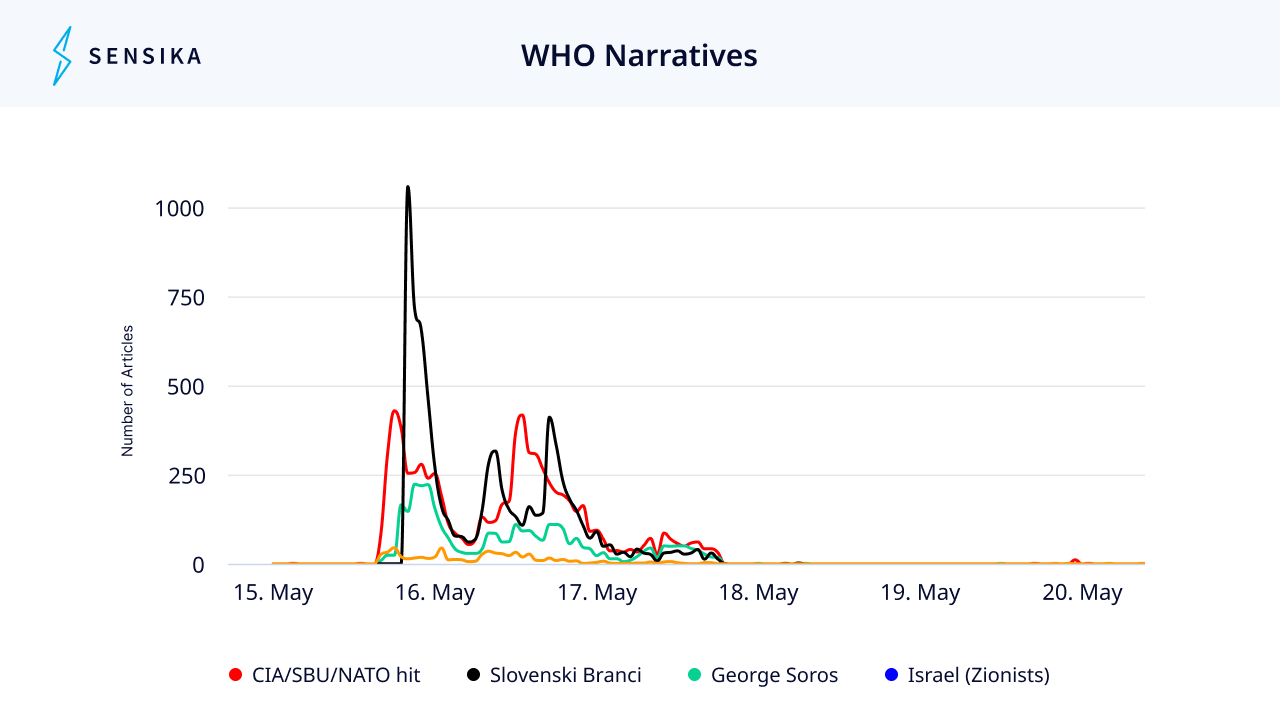
In addition to speculating about the motives behind the assassination attempt on Robert Fico, many users on X engaged in discussions about who might be responsible. Our analysis identified several prominent WHO narratives, each offering different theories about the perpetrators. These narratives, while less engaging compared to the WHY narratives, still played a significant role in the overall discourse.
Top WHO Narratives
- Political Rivals
- A significant number of tweets suggested that political opponents could be behind the attack. This narrative posits that individuals or groups opposed to Fico’s political agenda or leadership might resort to violence to remove him from the political scene. Tweets in this category often discussed the intense rivalry and contentious atmosphere in Slovakian politics. Others referenced past political violence and rivalries to support this theory.
- Foreign Agents
- Another prevalent narrative pointed to foreign entities or intelligence agencies as potential culprits. This theory fits within broader concerns about international espionage and foreign interference in domestic affairs. Tweets speculating on this possibility often referenced geopolitical tensions and suggested that foreign powers with interests in Slovakia’s political landscape could have orchestrated the attack. The narrative often included mentions of specific countries or intelligence agencies purportedly involved in covert operations.
- Organized Crime Groups
- Some users speculated that organized crime syndicates might be responsible for the assassination attempt. This narrative highlights the potential intersection of politics and criminal activity, suggesting that Fico’s policies or actions might have threatened powerful criminal interests. Tweets in this category often pointed to Slovakia’s history of political corruption and organized crime influence as context for this theory.
- Disgruntled Former Associates
- Another theory proposed that former associates of Fico, possibly those who felt betrayed or marginalized, could have been behind the attack. This narrative suggests that personal vendettas and internal conflicts within Fico’s political circle might have led to such drastic actions. Tweets supporting this theory often recounted past political dramas and falling-outs that could have motivated an insider to target Fico.
- Extremist Groups
- There were also speculations about extremist groups being involved in the assassination attempt. This narrative encompasses both domestic and international extremist organizations that might oppose Fico’s policies or political stance. Tweets in this category often linked the attack to broader issues of political extremism and radicalization, suggesting that such groups might resort to violence to advance their causes.
Implications:
- Diverse Speculations: The range of WHO narratives highlights the diverse suspicions and theories circulating on social media, reflecting the complexity of the political and social landscape.
- Public Perception: The spread of these WHO narratives can shape public perception of the assassination attempt and influence the broader conversation about political violence and security.
The WHO narratives identified in our analysis provide a comprehensive look into the speculated perpetrators behind the assassination attempt on Robert Fico. The diversity of these narratives, from political rivals to foreign agents and extremist groups, underscores the multifaceted nature of public discourse on social media and the influence of organized disinformation efforts.
Secondary Narratives
Beyond the primary speculations about who and why the assassination attempt on Robert Fico occurred, several secondary narratives also emerged on X. These narratives, while not directly addressing the perpetrators or motives, provided additional context and theories that contributed to the overall discussion. One notable aspect of these secondary narratives is that only one—the World War 3 (WW3) narrative—persisted beyond the initial surge of interest.
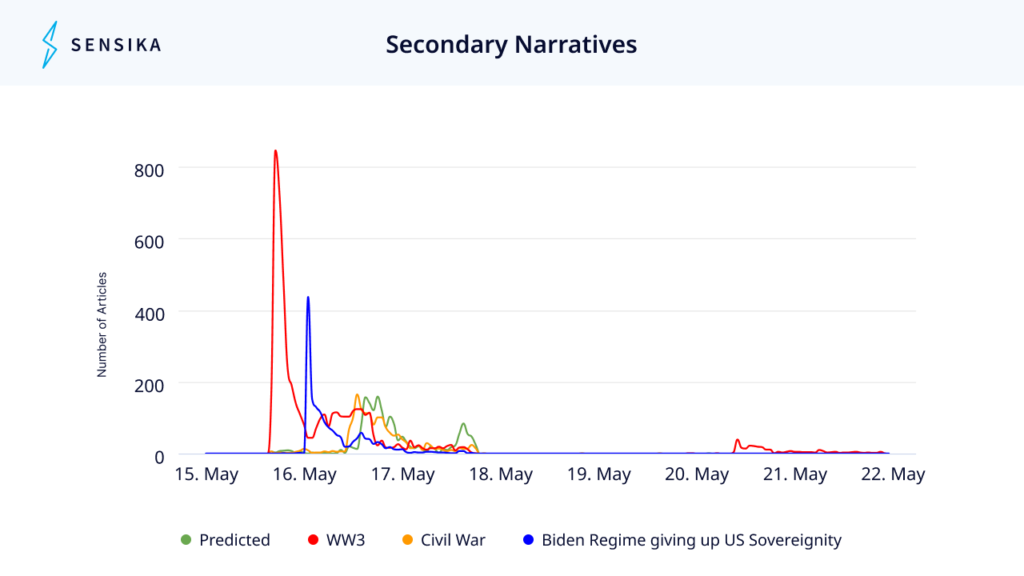
Key Secondary Narratives
- World War 3 (WW3)
- The most enduring secondary narrative suggested that the assassination attempt was a precursor to or part of escalating tensions that could lead to World War 3. This narrative tapped into broader geopolitical fears and speculations about global conflict. Unlike other narratives that faded over the weekend, the WW3 narrative saw a minor resurgence after the weekend, indicating a sustained, albeit niche, interest. Tweets in this category often linked the event to existing international conflicts and tensions, suggesting that Fico’s assassination attempt was part of a larger, more ominous pattern.
- Civil War
- Another significant secondary narrative speculated that the assassination attempt could lead to or was indicative of an impending civil war. This theory resonated with users who believed that the political climate was volatile enough to escalate into internal conflict. Tweets in this category often highlighted the polarized nature of Slovakian politics and suggested that such an extreme event could push the country towards a civil war.
- Biden Regime Giving Up US Sovereignty
- Some users speculated that the event was somehow related to broader narratives about the Biden administration in the United States, specifically theories about the administration giving up US sovereignty. This narrative reflects how international events can be tied into local political discourses, regardless of direct connections.
- Predicted
- A narrative emerged suggesting that the assassination attempt had been predicted by certain groups or individuals. This narrative often involved conspiracy theories, with users claiming that the event was foreseen due to patterns or signs that were supposedly ignored by authorities.
Persistence and Impact
The persistence of the WW3 narrative beyond the initial three-day spike is particularly noteworthy. Its continued presence, albeit at a lower level, suggests that certain narratives can maintain traction and influence over time, especially when they resonate with ongoing global anxieties and conflicts.
Implications:
- Sustained Engagement: The WW3 narrative’s persistence indicates it resonates with a segment of the audience concerned about global geopolitical tensions.
- Organized Propagation: The minor resurgence post-weekend suggests that this narrative may be driven by organized efforts, possibly by groups with a vested interest in maintaining this fear.
Influence on Public Perception:
- Complex Discourse: The variety and persistence of these secondary narratives can significantly shape public perception and understanding of the assassination attempt.
- Drivers of Engagement: By tracking these narratives, we gain insights into the broader themes and concerns that capture public interest and drive online discussions.
The secondary narratives highlight the multifaceted nature of public discourse on social media. They show how a single incident can trigger a wide array of speculations and theories, each reflecting different facets of public concern and interest. Understanding these narratives is crucial for comprehensively addressing misinformation and fostering informed public dialogue.
Additional Observations
In addition to the primary and secondary narratives, several notable trends and patterns emerged from our analysis. These observations provide further insights into the nature of the online discourse and the behavior of users and entities involved in spreading information about the assassination attempt on Robert Fico.
Troll Factories and Automated Bots
A notable reduction in bot activity over the weekend suggests a shift in tactics by troll factories, possibly due to improved detection and deletion of automated accounts by the platform.
Possible Reasons:
- Improved Detection: Enhanced algorithms for identifying and removing bots have likely reduced the effectiveness of automated troll accounts.
- Shift in Tactics: Troll factories may have increased the use of human-operated accounts, which are more difficult to detect and ban.
Implications:
- Adaptive Tactics: The shift from automated bots to human-operated accounts highlights the adaptability of disinformation campaigns and the continuous evolution of their strategies.
- Detection Challenges: This shift underscores the importance of developing more sophisticated detection methods to combat human-operated troll accounts.
Persistence of the WW3 Narrative
The narrative about a potential World War 3 was the only one that persisted beyond the initial three-day surge and even saw a minor increase after the weekend. This pattern suggests that certain narratives, particularly those tapping into deep-seated fears and anxieties, can maintain traction over a longer period.
Implications:
- Sustained Interest: The continued presence of the WW3 narrative indicates that it resonates strongly with a segment of the audience, reflecting ongoing global anxieties about geopolitical tensions.
- Organized Propagation: The minor resurgence post-weekend suggests that this narrative may be driven by organized efforts, possibly by groups with a vested interest in maintaining this fear.
Language Distribution
The topic was predominantly discussed in English, amplifying its reach and engagement globally. This highlights the role of language in shaping the spread and impact of disinformation.
The use of English allowed the narrative to reach a wider audience, transcending regional and linguistic barriers. The event also sparked discussions in 82 different languages, reflecting its broad international relevance.
The linguistic diversity emphasizes the need for multi-lingual monitoring and response strategies to effectively manage disinformation on a global scale.
Influence of Public Figures
Notably, Marjorie Taylor Greene echoed two primary WHY narratives (opposition to WHO and Ukraine Aid), reflecting how high-profile individuals can amplify disinformation. Her statements were widely shared and discussed, demonstrating the significant influence that public figures can have in shaping and spreading narratives.
Impact:
- Amplification Effect: Public figures with large followings can dramatically amplify certain narratives, giving them more visibility and credibility.
- Resonance with Audience: The alignment of Greene’s statements with existing narratives suggests a feedback loop, where influential voices reinforce and propagate popular speculations.
Implications:
- Accountability: The role of public figures in spreading disinformation highlights the importance of holding influential individuals accountable for their statements and ensuring they do not contribute to the spread of falsehoods.
- Strategic Influence: Recognizing the impact of high-profile figures can help in developing targeted strategies to counteract their influence when they spread disinformation.
These additional observations provide a deeper understanding of the dynamics at play in the online discourse surrounding the assassination attempt on Robert Fico. They underscore the complex interplay between automated and human-driven efforts, the persistence of certain fear-based narratives, the impact of language on dissemination, and the influential role of public figures. Addressing these factors is crucial for developing effective strategies to combat misinformation and ensure a well-informed public.
Conclusion
Our comprehensive analysis of the X activity following the assassination attempt on Robert Fico reveals the complex and multifaceted nature of online discourse during high-profile events. The findings highlight the rapid spread of information, the diverse narratives that emerge, and the significant engagement from users worldwide.
Key Takeaways
- High Engagement and Rapid Spread:
- The event generated over 702,000 tweets from more than 270,000 unique authors, reaching a potential audience of nearly 4.7 billion. This underscores the powerful amplification effect of social media.
- 3-Day Miracle:
- The volume of tweets peaked dramatically within the first 24 hours and maintained high levels of engagement for three days before declining sharply. This pattern emphasizes the short-lived but intense nature of social media attention.
- Prominent WHY and WHO Troll-Driven Narratives:
- Speculations about the motives behind the attack were prevalent and actively carried out by controlled troll operations. Key narratives included opposition to WHO policies, disapproval of Ukraine aid, political motivations, personal vendettas, and economic policies.
- Theories about the potential perpetrators included political rivals, foreign agents, organized crime groups, disgruntled former associates, and extremist groups.
- Secondary Narratives:
- Several secondary narratives, such as the WW3 theory, persisted beyond the initial surge and exploited broader geopolitical fears, indicating sustained interest in certain themes.
- Additional Observations:
- The analysis revealed a potential shift from automated bot activity to human-operated accounts, highlighting the adaptive strategies of troll factories.
- The significant role of language in spreading narratives, with a focus on targeting US audiences, was evident.
- The influential impact of public figures like Marjorie Taylor Greene in amplifying specific narratives underscores the importance of public figure accountability.
Implications for Media Monitoring and Disinformation Management
Understanding these dynamics is crucial for media monitoring and disinformation management. The rapid spread and high engagement levels highlight the need for timely interventions to counteract false narratives. The persistence of certain narratives and the role of influential figures suggest targeted strategies are needed to address and mitigate the spread of disinformation effectively.
Strategies for Effective Disinformation Management
- Timely Response: Quick identification and response to emerging narratives can help mitigate the spread of misinformation during the peak period of public interest.
- Multi-lingual Monitoring: Given the global reach and linguistic diversity of the discussions, multi-lingual monitoring is essential for comprehensive coverage and effective response.
- Public Figure Accountability: Holding influential individuals accountable for their statements and ensuring they do not contribute to the spread of falsehoods is critical.
- Education and Awareness: Educating the public about the nature of disinformation and promoting media literacy can empower users to critically evaluate the information they encounter.
By sharing this article and our findings, we aim to contribute to a more informed and vigilant society, capable of discerning truth from falsehood in the ever-evolving media landscape. Our analysis underscores the importance of continuous monitoring and proactive strategies in combating disinformation and promoting accurate information.
Methodology
To ensure a comprehensive analysis, we employed the following methodology:
- Data Collection:
- Our first step involved gathering data from X. We focused on tweets that mentioned Robert Fico and related keywords from May 15th to May 21st. This period allowed us to capture both immediate reactions and lingering discussions.
- Filtering:
- With a large volume of data collected, the next step was to filter out irrelevant content. This included removing spam, bot-generated tweets, and discussions unrelated to the assassination attempt. We utilized a combination of automated filters, AI-built taxonomies for sub-filtering, and manual review to maintain high data quality.
- Categorization:
- Once we had a clean dataset, we categorized the tweets based on prominent narratives and themes. This involved identifying recurring topics, hashtags, and key phrases. We deployed our in-house AI models to assist in this categorization, allowing us to efficiently group tweets into meaningful categories.
- Quantitative Analysis:
- We conducted a quantitative analysis to measure the spread and impact of these narratives. Key metrics included the number of tweets, potential reach, total engagements, and the number of unique authors. This analysis provided a numerical foundation for our study, helping us gauge the volume and breadth of the conversation. It also allowed us to identify which narratives had the widest reach and highest engagement.
- Qualitative Analysis:
- In addition to the quantitative metrics, we performed a qualitative analysis to delve deeper into the content of the tweets. This involved examining the language, sentiment, and context of the tweets to identify key narratives and understand the underlying messages. We looked at the tone of the discussions, the credibility of the sources, and the emotional drivers behind the tweets. This qualitative insight was crucial in understanding not just what was being said, but why it was being said.
- Frequency Analysis:
- We analyzed the volume and frequency of sharing and engagement to determine the likelihood of certain accounts being troll-operated.
By following this comprehensive methodology, we aimed to provide a detailed and accurate depiction of the disinformation landscape on X following the Robert Fico assassination attempt. Our analysis offers valuable insights into the nature of online discourse during such critical events and highlights the importance of vigilant media monitoring.












